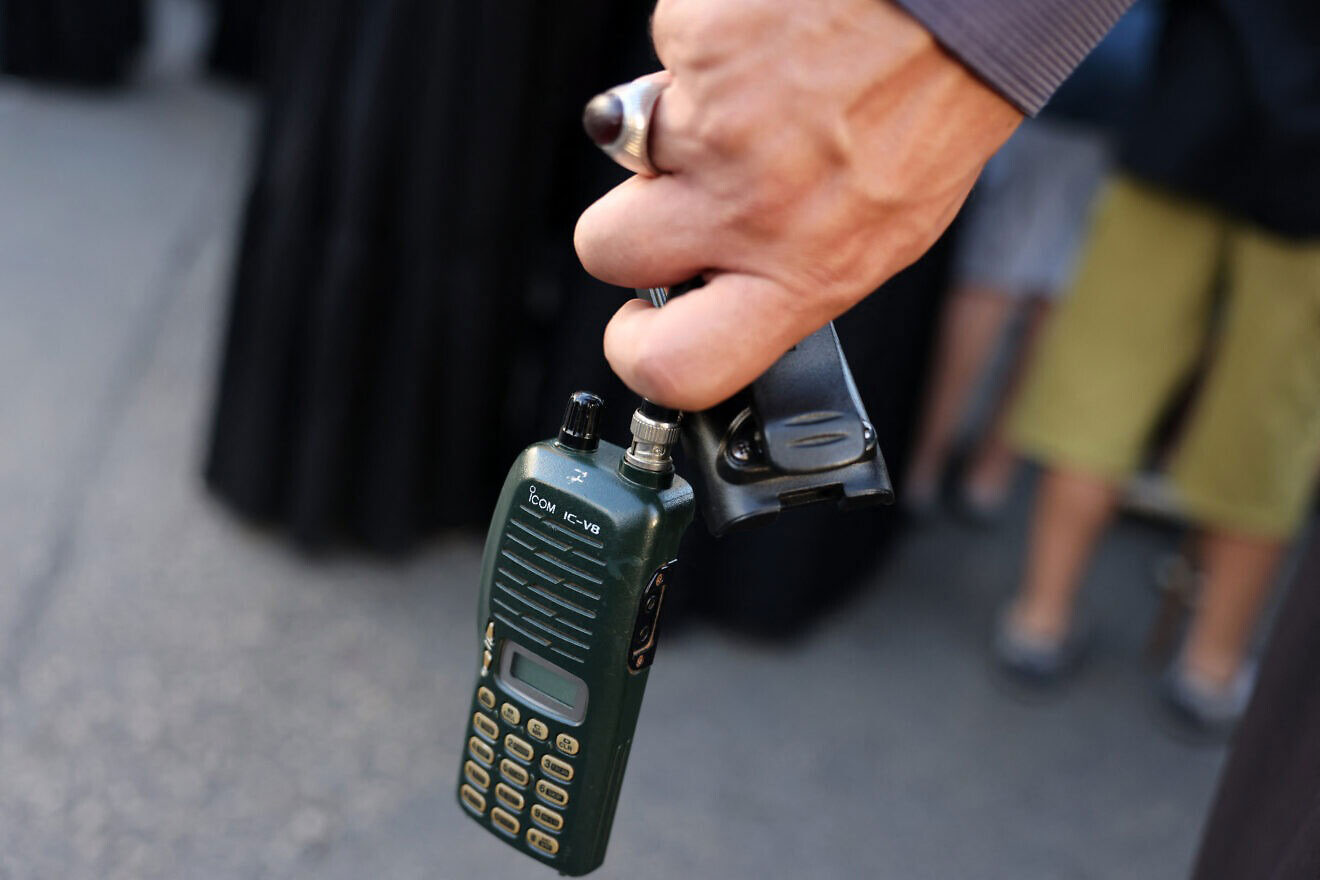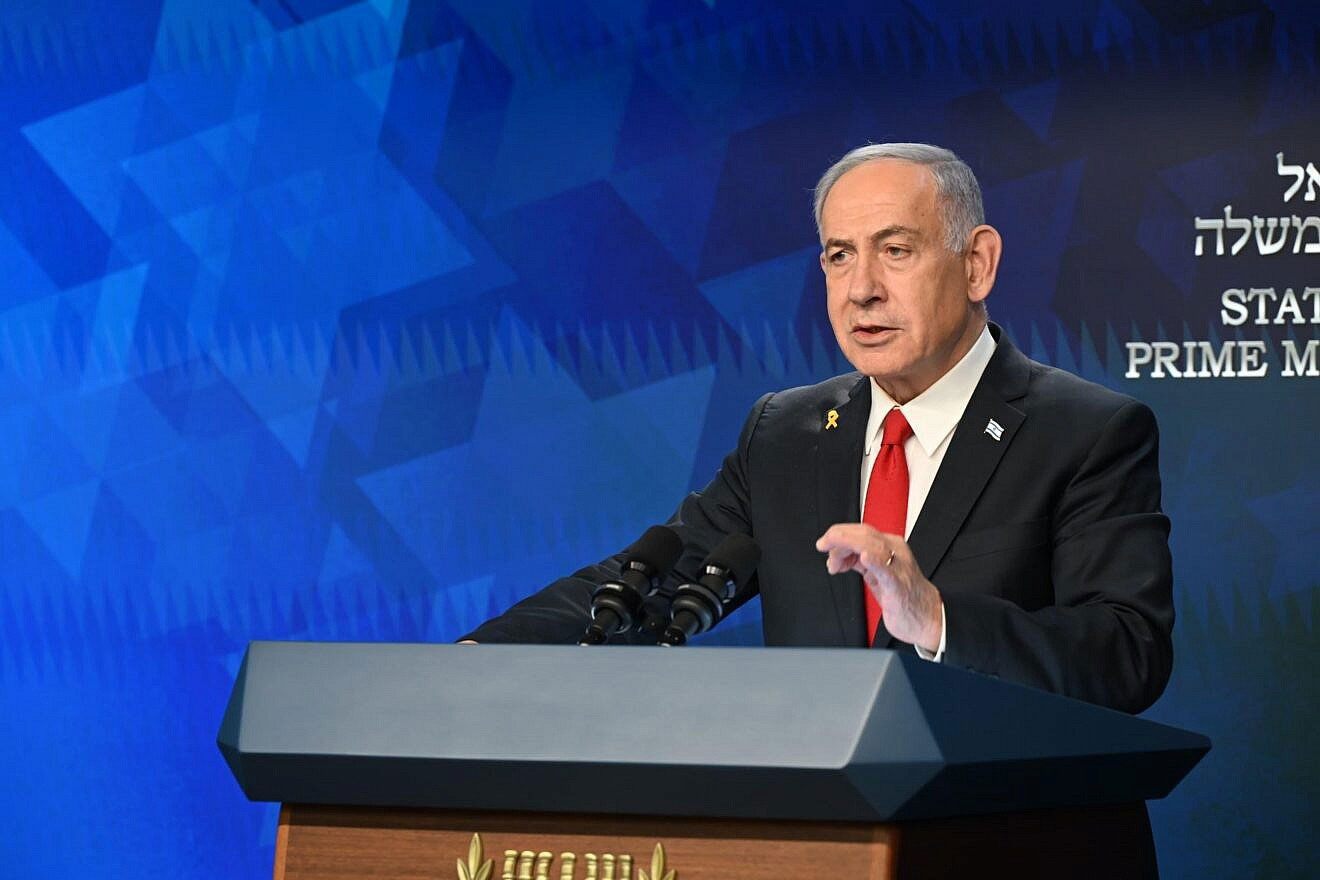Courtesy of JNS. Photo credit: Anwar Amro/AFP via Getty Images
A man holds an Icom walkie talkie device after he removed the battery during the funeral of persons killed when hundreds of paging devices exploded in a deadly wave across Lebanon the previous day, in Beirut’s southern suburbs on Sept. 18, 2024
(Israel Hayom) — In an extraordinary “60 Minutes” broadcast on Sunday, former Mossad agents pulled back the curtain on one of Israel’s most sophisticated covert operations, targeting Lebanon’s Iranian-backed Hezbollah terrorist organization.
According to the CBS News report, the intelligence agency spent a decade infiltrating Hezbollah’s supply chain with weaponized communication devices that ultimately helped turn the tide of war in Lebanon. In a devastating moment for the organization’s leadership, Hezbollah Secretary-General Hassan Nasrallah was reportedly forced to witness the deaths of his own security detail inside his bunker as their compromised communication devices detonated.
Speaking through masks and using pseudonyms, two retired senior agents described to CBS correspondent Lesley Stahl how they transformed walkie-talkies and pagers into precision weapons.
“A walkie-talkie was a weapon just like a bullet or a missile or a mortar,” explained the agent identified as Michael, describing the operation’s first phase. When Stahl pressed for details about the device’s construction, Michael revealed that “inside the battery, there is an explosive device,” which was “made in Israel” at a Mossad facility.
The ingenuity of the operation lay not just in the technical execution but in the elaborate deception campaign that accompanied it. Through a network of shell companies and fake business entities, Mossad managed to sell more than 16,000 explosive-laden devices to Hezbollah over several years, “60 Minutes” reported.
By 2022, emboldened by the success of the walkie-talkie operation, Mossad expanded its strategy to include pagers. However, the transition wasn’t smooth. “I remember the day that I came to our director, put it on the table. And he was furious,” recalled the second agent, identified as Gabriel. “He was telling us, ‘There is no chance that anyone will buy such a big device. It’s not comfortable in their pocket. It’s heavy.’”
Despite initial skepticism, Gabriel spent two weeks convincing Mossad leadership that the pager’s apparent drawbacks could be turned into selling points. The agency launched a sophisticated marketing campaign, creating fake YouTube advertisements that promoted the devices as premium products.
“We make advertising movies and brochures, and we put it on internet. And it became the best product in the pager area in the world,” Gabriel told Stahl. The marketing was so effective that Mossad had to field purchase requests from legitimate customers, which they deflected by quoting exorbitant prices.
The operation’s success hinged on maintaining an impenetrable facade of legitimacy. Mossad established a partnership with Gold Apollo, a Taiwanese pager manufacturer, through front companies. “When they are buying from us, they have zero clue that they are buying from the Mossad,” Gabriel explained. “We make like ‘Truman Show,’ everything is controlled by us behind the scenes. In their experience, everything is normal. Everything was 100% kosher, including businessmen, marketing, engineers, showroom, everything.”
The technical sophistication of the operation extended to the devices’ design. Each pager underwent extensive testing to ensure precise effects. “We test everything, triple, double, multiple times in order to make sure there is minimum damage,” said Gabriel. The agency even conducted research on average response times to pager alerts — approximately seven seconds — and engineered specific ringtones to maximize user engagement.
When Stahl inquired about the detonation mechanism, Gabriel revealed that users received messages claiming to contain encrypted information that required pressing two buttons to access. However, as Gabriel explained, “It’s the same effect. It’s gonna explode anyway.” The final detonation signals were triggered from Israel.
On Sept. 17, at precisely 3:30 p.m., thousands of pagers began beeping across Lebanon. The following day, the decade-old walkie-talkies were activated, some detonating at funerals for victims of the pager attacks. The precision of the devices was evident in videos reviewed by “60 Minutes,” showing explosions that wounded pager carriers while leaving nearby individuals unharmed.
“A day after the pagers exploded, people were afraid to turn on the air conditioners in Lebanon because they were afraid that they would explode,” Michael told Stahl, describing the psychological impact of the operation. “So there was real fear.”
The aftermath of the attacks demonstrated their strategic effectiveness. According to Gabriel, the operation wasn’t primarily about inflicting casualties. “If he’s just dead, so he’s dead,” he explained. “But if he [is] wounded, you have to take him to the hospital, take care of him. You need to invest money and effort. And those people without hands and eyes are living proof, walking in Lebanon, of ‘don’t mess with us.’”
The combined attacks resulted in approximately 30 fatalities, including two children, and wounded around 3,000 people. In the aftermath, Hezbollah leader Hassan Nasrallah delivered what former agents described as an uncharacteristically subdued speech, before being killed in an Israeli airstrike on his bunker on Sept. 27. A ceasefire between Israel and Hezbollah took effect at the end of November.





